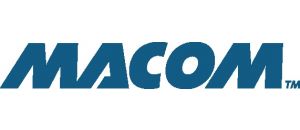State of the art Low Noise RF Amplifiers for a wide variety of applications are available from Castle Microwave. Our range of Low Noise Amplifiers and Ultra Low Noise Amplifiers have the following features:
State of the art Low Noise RF Amplifiers for a wide variety of applications are available from Castle Microwave. Our range of Low Noise Amplifiers and Ultra Low Noise Amplifiers have the following features:
• Frequencies ranging from 0.2GHz to 100GHz.
• Broadband and narrow bandwidth devices
• Single power supply
• Lightweight housing
• Appropriate coax or waveguide interfaces using a variety of technologies
Surface mount MMIC devices are also available as die or packaged parts.
What is a low noise amplifier?
A low noise amplifier is used to amplify very low-power signals without significantly degrading their signal-to-noise ratio. They increase the amplitude of weak RF signals, which assists processing as part of a receiver circuit. The primary specification parameter of an LNA is its noise figure, which is a measure of how much the LNA degrades the signal-to-noise ratio of the received signal.
Low noise amplifiers can also be used to compensate introduced loss in an RF signal path. By inserting a low noise amplifier, it will help to restore the original signal level, while ensuring the signal-to-noise ratio is retained.
How does a low noise amplifier work?
Low noise amplifiers are typically located immediately after the antenna in a receiver circuit however, (although a duplexer or filter may precede it.), the primary specification parameter of an LNA is its noise figure, which is a measure of how much the LNA degrades the signal-to-noise ratio of the received signal. Other Including the noise figure, the key performance specifications of low noise amplifiers are linearity (either P1dB or third order intercept), maximum input power, and DC power dissipation may be a consideration in battery powered equipment. These four specifications must be fulfilled to ensure that a low noise amplifier works effectively.
Features of LNAs
Typical applications include:
• Commercial and Military communications
• Radar
• EW systems
• GPS
• Wi-Fi (wireless LAN)
• Satellite receiver
Want to find out more about our low noise amplifiers? Send us an enquiry now, or request more information from our easy-to-fill form.
